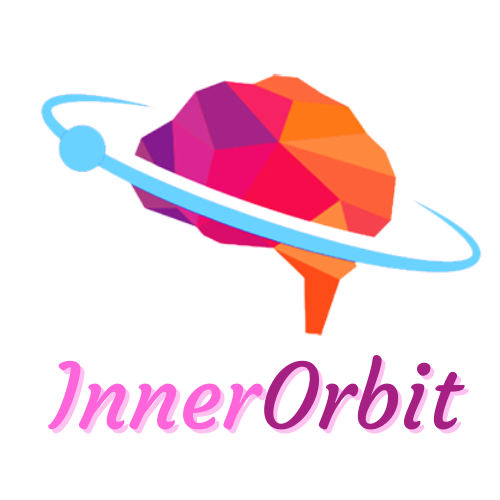

Start A Teacher Pilot
Introduce your classroom to InnerOrbit and and gather meaningful data, to build a strategy that maximizes your student’s learning potential!
Assessments & Reports for the Next Generation Science Standards
InnerOrbit gives students opportunities to make sense of novel phenomena and real-world events, with over 700 clusters of scaffolded assessment items that teachers and admins can use to build Benchmarks and Common Assessments. Once data is gathered InnerOrbit’s Reports break down student progress on DCIs, SEPs, and CCCs to, drive PLC conversations and continuous improvement of instruction and curriculum.

Phenomena & Sensemaking
Every assessment is crafted around unique and eye-catching phenomenon. Students apply knowledge and scientific or engineering skills to make sense of novel phenomena.
Representation vs Sensemaking

Model how the heat changes molecular motion.
- Phenomenon that students have more than likely discussed before
- Drawing an image students have more than likely seen and drawn before
- Representing the idea of heat/particle motion/phase change with lines and arrows

Use a model to show how heat and molecular motion explain the changes in the balloon.
- Phenomenon that students have more than likely not discussed before
- Using modeling (SEP) to explain the DCI and CCC
- Leveraging all 3 dimensions to grapple with a novel situation = Sensemaking

Scaffolded Assessments
Every question in our platform is tagged with discrete elements of SEPs, DCIs, and CCCs to provide a bank of 9,000+ items that are scaffolded as 1, 2, and 3-dimensional questions.

Our phenomena-driven questions scaffold up to allow students better access to the complexity and rigor of the NGSS. Prior knowledge questions focus on Disciplinary Core Ideas (DCIs). Formative and summative questions incorporate all 3 NGSS Dimensions, with a focus on Crosscutting Concepts (CCCs) and Science and Engineering Practices (SEPs). InnerOrbit has 4 different question types: Multiple Choice, Drag & Drop, Free Response and Modeling.
FAQs
- 1-Month access to all Phenomena-based NGSS Assessments
- Unlimited student and teacher pilot accounts
- Rostering through Google Classroom or Clever
- Full Access to all NGSS Reports and Data
- Choose a 30-day window for your pilot when you can administer assessments and gather data.
- Decide which educators are going to pilot InnerOrbit. We recommend groups of less than 10, but can accommodate larger groups if needed!
- Consider all stakeholders involved, such as administration, department leaders, student services leaders, etc.
InnerOrbit is dedicated to support all learners access our high-quality, rigorous phenomena and questions. Check out our features tools below to support your learners:
1. Text-to-Speech
Students can have the text read to them through our Readspeaker! Turn this on for specific students by visiting the “Rosters” tab, click “View all Students” in your roster, click on the student name, then change the listening setting to “on”.
(Students can click the “Listen” or “Play” button on the top left corner)


2. Text Size
All students can change the size of the text in their assessments by clicking on the two “T’s” on the bottom left of their assessment screen. This is default setting and does not need to be individually set!

3. Image Magnification
All students can magnify images in assessments by clicking on the image to see an enlarged version. This is default setting and does not need to be individually set!

4. Recommended Google Chrome Extension: Google Translate
Google Translate integrates with InnerOrbit’s text on phenomena descriptions, questions and answers to translate our phenomena and questions into any language. This is a tool that would need to installed on the student’s device.

It also provides a word/phrase translation by highlighting the specific words and clicking the icon. Or… change the Google Translate Extension setting to pop-up the word/phrase translation automatically (“Options” > “Immediately Display Popup”).

On InnerOrbit, educators can modify the question text and answer choices for any item on their assessment. This article is split into 2 sections:
Modification Guidelines
InnerOrbit takes great care to ensure our NGSS assessments are aligned to the NGSS, have intentional rigor, and are equitable in language, content, and jargon. Learn more about InnerOrbit Question-Level Tags.
Before modifying a question, reflect on the following 3 questions:
What misalignment do I see in the question?
Consider if the content you want to assess is truly aligned to the NGSS.
Tip: Message us on the site chat or email feedback@innerorbit.com with any content questions or feedback you may have.
What am I (specifically) wanting to modify?
Look at the question’s NGSS tags (hover over the question and the tagged standards will appear on the right). Will you be removing an essential element of the standards?
Tip: Consider a less rigorous question using the question tags (Ex: If you’re wanting to modify a summative question, consider a formative question instead.)

Will an InnerOrbit question at a prior grade band target what I want to assess?
Search InnerOrbit for the DCI of what you’re assessing (search bar). Skim through the phenomena and consider if questions from the prior grade band better matches what you want to assess.
For example, if you want to assess HS-PS2-1, we suggest looking up the DCI PS2.A: Forces and Motion and looking for assessments in the MS grade band.

Modification Ideas & Tips
The section below is a compilation of modifications educators have made on InnerOrbit for their own assessments with success. If you want to add to this list, please email us at feedback@innerorbit.com.
For any question on InnerOrbit, you can modify the questions and answer choices with the modifying pencil icon:
Press “↵ Enter” key to add answer choice.
Press “←Backspace” or “Delete” to remove the answer.

Modification tips:
Remove an answer choice
Simplify specific language
Add synonyms in parenthesis
Add a framing sentence (ex: Consider the role of environmental pressures…)
Add a hint from class (ex: Hint: remember the elephant toothpaste lab!)
Add word banks/sentence stems for open ended questions (ex: A piece of evidence that matches the claim is…)
Add list of what to include in model for drawing questions (ex: Include the cell membrane, and 1 blue arrow showing…)
Want to create your own question?
Learn more about editing different question types
How do I share permissions with my co-teacher?
Step 1: Make sure the teacher is connected to your school by going to “School” > “Teachers” tab. Check to see that they are in the “Teachers” list.*
*if you do not see your co-teacher in this list, check out this quick video on how to invite them

Step 2: Go to “School” > “Permissions” tab.

Step 3: Scroll to find your co-teacher and select the permissions you would like to share. Check below for more rule details

What do the permissions look like in my co-teacher’s account?
Below are examples of what your co-teacher’s account will look like when you share specific class permission with them:
View Reports
Your co-teacher will have access to your gradebook and assignment reports when they scroll pass their own reports.

Assign Assessments + Edit Rosters:
Your co-teacher will be able to assign assessments to your classes. Make sure to share the edit rosters permission too!

Edit Rosters:
Your co-teacher can edit your roster settings and add/remove students.

Grading:
If you have ungraded free responses, your co-teacher has the ability to help you grade.

Need help?
Use the purple magnifying glass in the bottom right corner of the screen
to chat with us anytime or email support@innerorbit.com
*If you don’t have rosters in InnerOrbit yet, you can sync your rosters from Google classroom directly into the site.
*If you need to add or remove students, simply resync Google Classroom and the changes will push through.
STEP 1: Go to your “Rosters” tab.

STEP 2: Click “Import Rosters from Google”.

STEP 3: Sign into your Google account.

STEP 4: Click “Allow” InnerOrbit to access your Google Classroom.

STEP 5: Select all or specific rosters you want to sync into InnerOrbit.

STEP 6: Select a grade level for each roster, and the “Import Roster and Students” button will turn orange for you to finish importing!

You’ll now see your classes in InnerOrbit under your Rosters tab
and when you create and assign an assessment.

Step 7: To get your students into InnerOrbit, either send students to www.innerorbit.com/login OR send them the direct assessment link.*

*With either method, students can “Sign in with Google”

For more help getting students signed into InnerOrbit after you’ve sync’d rosters with Google Classroom, check out this “How Students Log into InnerOrbit” video.
For Google Classroom & Clever users, you don’t have to manually set up your rosters. Please message us on the site chat or email support@innerorbit.com with any questions!
If you need to create a new roster on InnerOrbit, check out the steps below!
Step 1. Go to “Rosters” tab

Step 2. Click “Create New Roster”

Step 3. Type in the class name, and click “next”. (The button should turn green)

Step 4. Use the drop down menu to select your class grade level. Click “next”

Step 5. Select the roster session. Then, click “Create Roster”.

Step 6. Congrats! You are done when this add code link pops up!

What’s next after this?
Sync students with add codes (best for students with Google accounts)
Create student accounts (best for students without Google accounts – students will login with username, password, & school ID)

